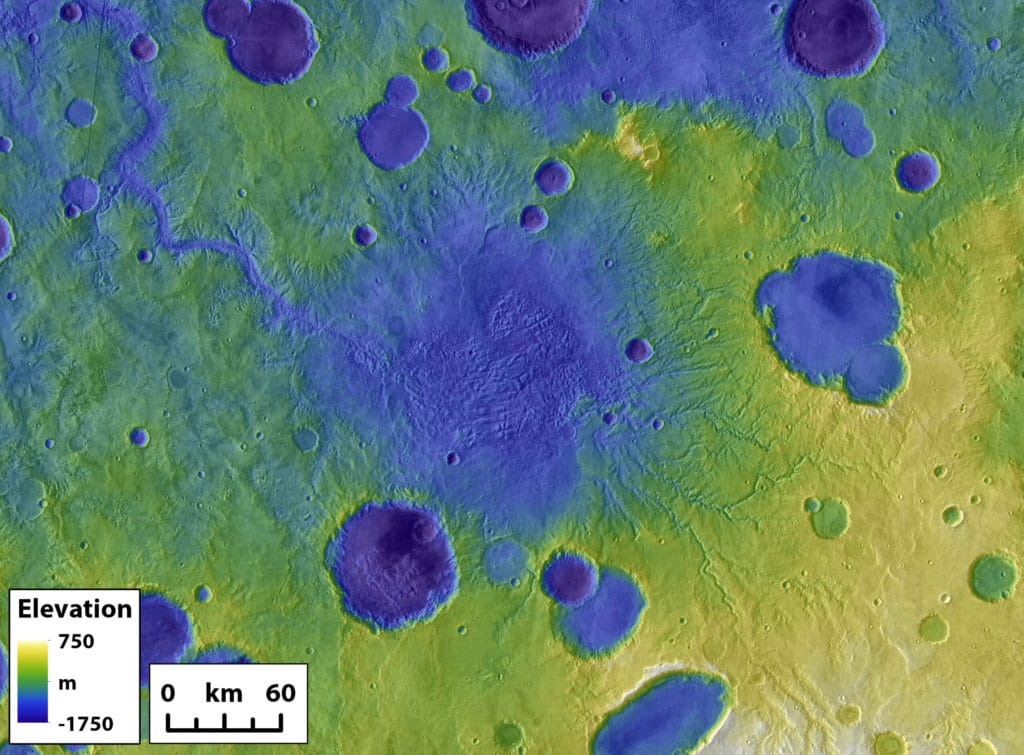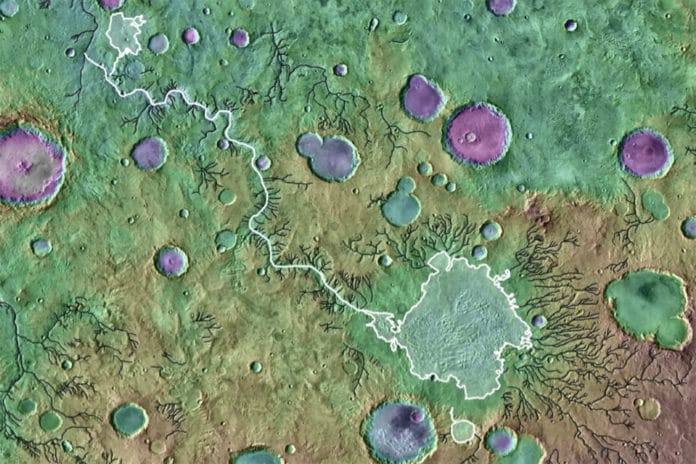According to a new study, massive floods from the crater lakes have carved deep chasms and moved vast sediments on Mars. The study by the University of Texas at Austin found that these floods play a vital role in shaping the Martian surface.
These floods lasted mere weeks and have eroded more than enough sediment to fill Lake Superior and Lake Ontario.
Crater lakes were common on Mars billions of years ago when the Red Planet had liquid water on its surface. Some craters could hold a small sea’s worth of water. But when the water became too much to hold, it would breach the edge of the crater, causing catastrophic flooding that carved river valleys in its wake.
The mars orbiting satellites study the crater lakes and their river valleys on an individual basis. For the first time, scientists studied how the 262 breached lakes across the Red Planet shaped the Martian surface.
For the study, scientists reviewed a preexisting catalog of river valleys on Mars. They classified the valleys into two categories: valleys that started at a crater’s edge and valleys that formed elsewhere on the landscape.
By comparing the different valley types’ depth, length, and volume, scientists found that river valleys formed by crater lake breaches punch far above their weight. Flood from these valleys eroded nearly a quarter of the Mars river valley volume despite making up only 3% of the total valley length.
Study co-author Alexander Morgan, a research scientist at the Planetary Science Institute, said, “This discrepancy is accounted for by the fact that outlet canyons are significantly deeper than other valleys.”

At 559 feet (170.5 meters), the median depth of a breach river valley is more than twice that of other river valleys with a depth of about 254 feet (77.5 meters), created more gradually over time.
In addition, although the chasms appeared in a geologic instant, they may have had a lasting effect on the surrounding landscape. The study suggests that the breaches scoured canyons so deep they may have influenced the formation of other nearby river valleys.
Scientists noted, “This is a potential alternative explanation for unique Martian river valley topography that is usually attributed to climate.”
Lead author Tim Goudge, an assistant professor at the UT Jackson School of Geosciences, said, “When you fill [the craters] with water, it’s a lot of stored energy there to be released. It makes sense that Mars might tip, in this case, toward being shaped by catastrophism more than the Earth.”
Journal Reference:
- Goudge, T.A., Morgan, A.M., Stucky de Quay, G. et al. The importance of lake breach floods for valley incision on early Mars. Nature 597, 645–649 (2021). DOI: 10.1038/s41586-021-03860-1
